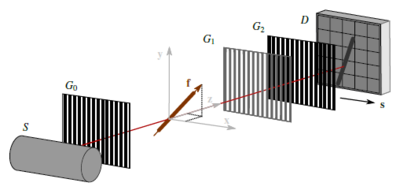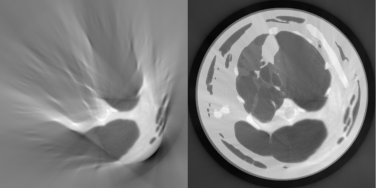
Friedrich-Alexander-Universität Erlangen
Lehrstuhl für Mustererkennung
Martensstraße 3
91058 Erlangen


The X-ray dark-field signal can be measured with a grating-based
Talbot-Lau interferometer. Interestingly, the signal is a function of
the relative orientation of the sample, the X-ray beam direction,
and the direction of the interferometer sensitivity.
In this project we aim at describing a very general 3-D dark-field projection model.

X-Ray Phase-Contrast Imaging can provide high soft-tissue contrast.
Unfortunately, all grating-based systems are limited by the grating sizes
of a few centimeters. This leads to truncation in the projection images
and therefore artifacts in the reconstruction.
This projects has the aim to find reconstruction algorithms to correct
for phase truncation artifacts, and therefore to obtain quantitative
correct phase values.

X-Ray Phase-Contrast Imaging can provide high soft-tissue contrast.
Unfortunately, all grating-based systems are limited by the grating sizes
of a few centimeters. This leads to truncation in the projection images
and therefore artifacts in the reconstruction.
This projects has the aim to find reconstruction algorithms to correct
for phase truncation artifacts, and therefore to obtain quantitative
correct phase values.

The X-ray dark-field signal can be measured with a grating-based
Talbot-Lau interferometer. Interestingly, the signal is a function of
the relative orientation of the sample, the X-ray beam direction,
and the direction of the interferometer sensitivity.
In this project we aim at describing a very general 3-D dark-field projection model.